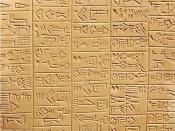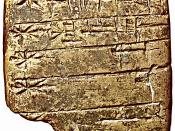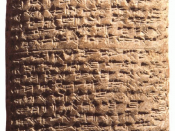Ancient systems of writing in the Middle East arose when
people needed a method for remembering important information. In
both Ancient Iraq and Ancient Egypt each of the stages of writing,
from pictograms to ideograms to phonetograms, evolved as a response
to the need to express more complex ideas. Satisfaction of this
need gave us the two most famous forms of ancient writing,
cuneiform from ancient Iraq, and hieroglyphics from ancient Egypt.
Both of these forms of writing evolved and their use spread to
other peoples even after the originators of the scripts had passed
on.
Some of the oldest writing found in the Middle East dates from
8000 to 3000 B.C. This corresponds to the approximate time period
that the people of the region went from living a nomadic life to
settlement in villages and trading among themselves. When trading
large or varying types of commodities you need a method for
recording. To meet this need developed a token system for the
recording of financial data. These tokens were of varying shapes
for various things, two to three centimetres in size, and used for
enumeration and keeping track of goods and labour.
These tokens eventually had to be stored so they wouldn't be
misplaced or lost. To secure them, they were placed in opaque clay
envelopes. To indicate what was inside the envelope markings were
made on it, eventually someone realized that all you had to do was
mark on the clay what was in the envelope and you discard the
tokens altogether. With this major development we get the first
writing on clay tablets.
In Ancient Mesopotamia the most readily available material for
writing on was clay. When writing on clay first arose, the scribe
would try to make an artistic representation of what he was
referring to.


